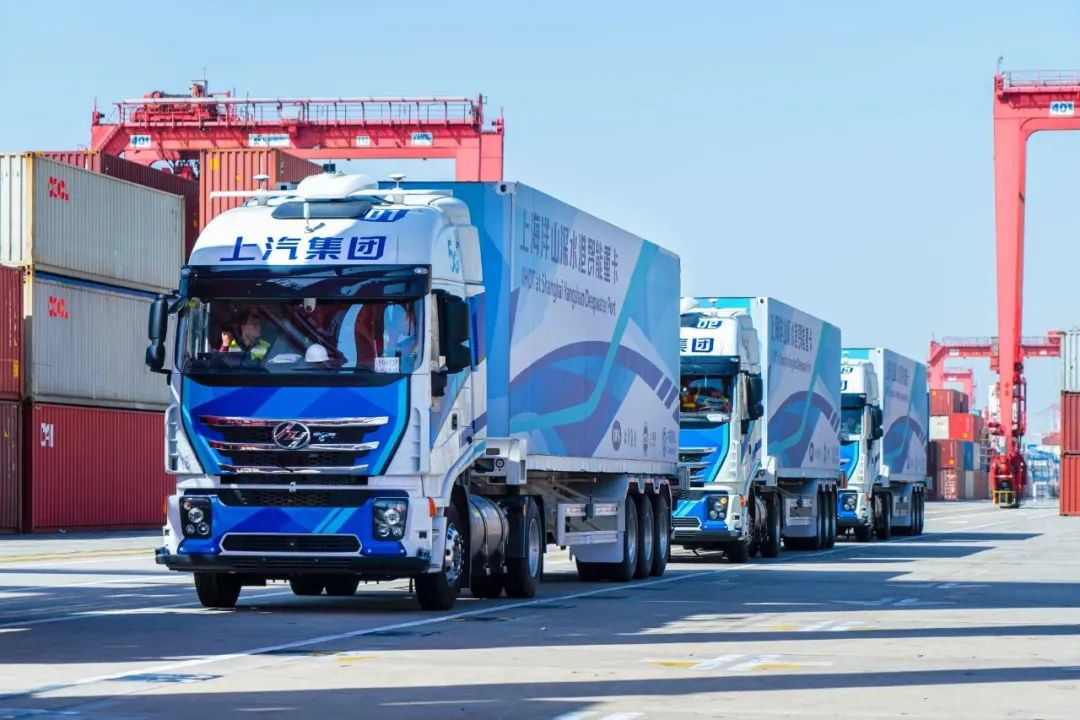Author: Wang Xuan
Now there is a good job opportunity in front of everyone. The job takes two days, and the hard requirements are having an A2 driver’s license and being hardworking. The pay is very attractive at 30,000 yuan per job, but the cost is borne by oneself. In exchange, one must undergo 14-day quarantine and may not be able to return home for a long period of time. Would you be willing to take on such a job?
Since the outbreak of the pandemic in Shanghai, the shortage of materials has been a continuously fermenting problem, and societal debates about the cause of this shortage have been ongoing. On April 14, a First Financial article titled “It’s Too Difficult to Deliver in Shanghai for 30,000 Yuan. How Hard is Cross-Province Logistics?” exposed another core issue behind the material shortage – unfriendly epidemic prevention policies towards freight drivers have become a hindrance to the trunk logistics.
The pandemic has put on the table the issues related to “people” in the trunk logistics industry, with “automation” in the automotive industry corresponding to self-driving technology, which has been the industry’s technological high ground that it has been trying to overcome in the past ten years. There is no doubt that the pandemic has pushed this wave to a new height.
A search on Baidu for “self-driving, heavy-duty trucks” yields 13 million related entries, and adding the word “pandemic” to the search yields 7.8 million related entries, which means that more than half of the information related to self-driving heavy-duty trucks has been released in the past two years.
The high level of social attention is the reason why we have sorted out the entire commercial vehicle automation driving business. This article will explain in detail the problems that commercial autonomous driving solves, the obstacles to industry development, and the industrial upgrading it will bring.

The Pandemic Gives “Automation” a New Story
Problem corresponds to demand. In order to delve into the needs of the freight industry during the pandemic, we interviewed a small freight company’s manager, A Rong (alias), and through our communication with him, we reconstructed a real-life scenario of a freight driver.
What drives freight drivers to leave their hometowns? Is it for a new business contract? Originally, yes. But now it’s a piece of commitment letter. Freight drivers belong to the blue-collar profession, and the nature of their occupation means that most of them are from second-tier or third-tier cities. Friends who have experienced the Spring Festival travel rush for the past two years all know that flexible epidemic prevention policies are generally adopted by directly governed cities or new first-tier cities. In the remaining provinces and prefecture-level cities, “across-the-board” policies are prevalent.
For freight drivers, who travel across different regions long-term, they are a focus of attention of local governments. For the sake of managing from many angles, they sign commitment letters that state they will not return home for a long time before leaving for work. It is normal for their travel permit to carry a star, and in order to be able to transport goods across borders, the cockpit of the freight vehicle will be sealed, and drivers are not allowed to leave the vehicle within provincial borders.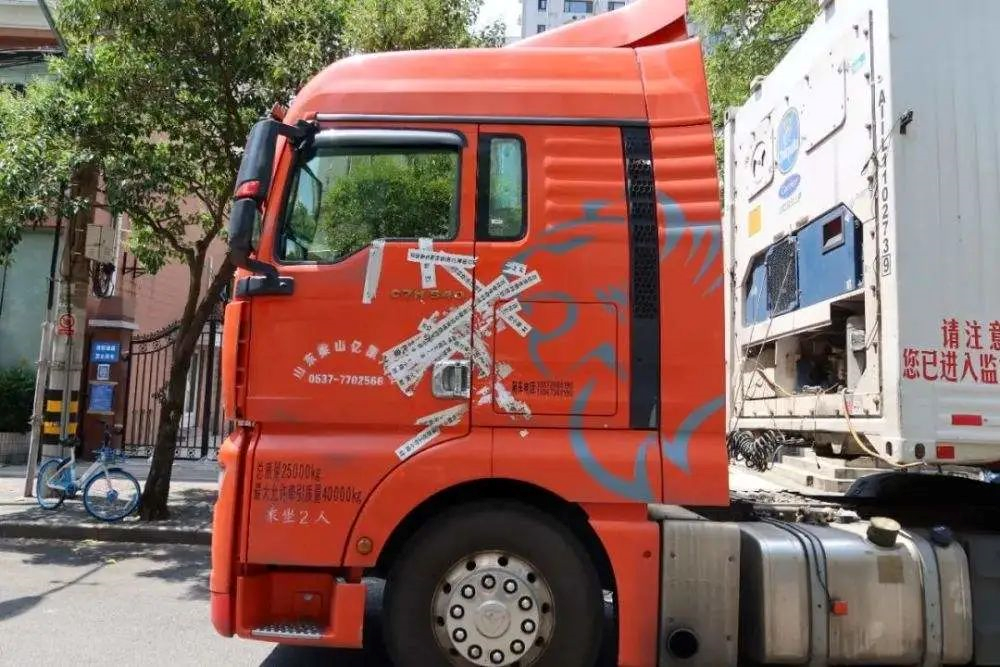
Since the appearance of the sporadic epidemic at the end of 2021, the message that Arong fears the most is “not coming back after the Chinese New Year.” The restrictions of epidemic prevention policies have made the work of freight drivers even more difficult. The long-term inability to go home and the risk of being quarantined at any time have prompted a large number of freight drivers to have thoughts of giving up.
Having cars but no drivers is the awkward situation that logistics companies have faced in the era of the epidemic. Since the outbreak, the fleet of freight drivers has been reduced at an accelerating rate. According to CCTV reports, there is a shortage of 10 million freight drivers in China in 2021. The number of industry practitioners has plummeted from 30 million in 2016 to 17.28 million in 2021.
For Arong, the reduction of freight drivers caused by the epidemic is a further blow rather than a bolt from the blue. The trend of negative growth in the fleet of freight drivers has emerged before the epidemic. The shortage of personnel in the freight driver industry is one of the core reasons why the number of personnel has been halved. According to statistics, post-90s freight drivers account for only 2%, and the entry threshold of A2 driver’s license is also very high for most people. Therefore, in 2019, TuSimple (a commercial autonomous driving start-up) wrote this problem of personnel supply gap into the prospectus.
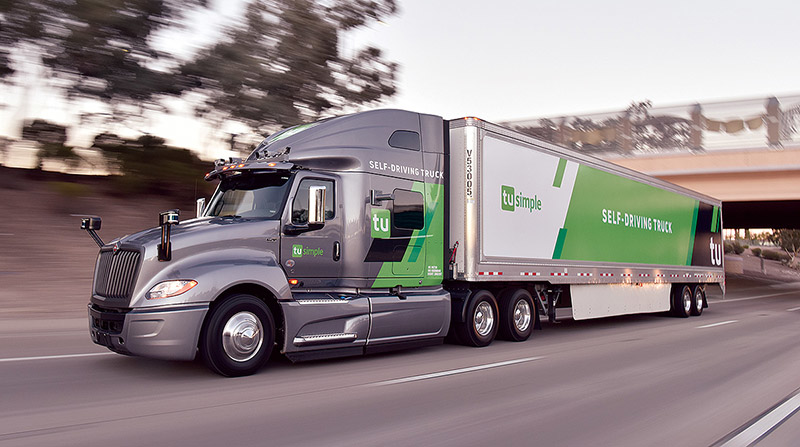
In the past, we believed that automation would become the nemesis of labor modes. But under the premise of active reduction of traditional labor force, automation may become a savior for the transportation industry.
The most difficult problem gives birth to the most commercially viable route
We have talked about the reduction in supply, and now we will discuss the increase in demand and clearer commercial prospects.
In order to gain a deeper understanding of the development of the commercial vehicle autonomous driving industry, we interviewed Wang Rui, the general manager of Shanghai Youdao Zhitu Technology Co., Ltd.
Youdao Zhitu is a young and experienced autonomous driving technology start-up company, jointly invested and established by many well-known companies including SAIC, SGS, Qingdao Haier Group, Plus Hill Capital, and State Power Investment Group. It is said to be young and experienced because Youdao Zhitu was officially established on November 8, 2021, and although it has only been established for more than half a year, its L4 intelligent heavy truck has been tested and operated autonomously on the Donghai Bridge since 2018. As of now, it has accumulated more than three years of real-world data and operating experience, and has achieved quasi-commercial operation.Friends who pay attention to daily epidemic dynamics often see the two key words “delivery” and “logistics” in the bulletins. These correspond to the two core scenarios that commercial autonomous driving technology needs to address: last-mile delivery and trunk transportation. In addition, there is a third major scenario – port transportation. Distribution and logistics are the two industries that have continued to grow in recent years and have also been hit hard by the epidemic. Working from home has forced people to choose take-out and online shopping.
Regarding the epidemic and “unmanned” transportation, Wang Rui, who is in Shanghai, has a very profound understanding.
“Indeed, the epidemic will accelerate the advancement of autonomous driving. On the one hand, it promotes the iteration and upgrading of various autonomous driving products, and promotes the launch of new products. On the other hand, it brings everyone’s deep thinking on the concept of autonomous driving. Under the promotion of the current epidemic, the entire autonomous driving industry is accelerating into a fully unmanned era, which is a very big challenge.
At present, although autonomous driving has clear application requirements in many scenarios such as end-to-end logistics and community disinfection, due to the insufficient adaptability of many products, most of them can only realize the application of one link in the entire chain and cannot achieve a fully closed loop. For example, the garbage clearance or equipment transfer in the mobile cabin hospital requires manual loading and unloading, which leads to less than ideal operational efficiency.”
Wang Rui likened this kind of autonomous driving technology for a single scenario to “blank walls”, and products adapted to the scenarios are “fully-decorated houses”. Obviously, the decoration process takes time, and it is somewhat rushed to put commercial autonomous driving technology into the epidemic situation at this moment.
Although the tricky epidemic caught most people off guard, its commercial value is beyond doubt. So how can commercial autonomous driving companies systematically generate value from technology? First, we need to clarify the development roadmap for commercial autonomous driving.
The streets and mobile cabin hospitals without people due to lockdown are both structural scenarios. The earliest structural scenario used for incubating commercial autonomous driving was the port. From the interview, we learned that Youdao Zhitu is an autonomous driving company incubated from the Shanghai Yangshan Port Project. The development roadmap of commercial autonomous driving is divided into two paths. One is to expand the structural scenario, such as using it in epidemic situations as we just mentioned. Regarding Youdao Zhitu, the next step to solve port issues is specific scenarios such as mines and logistics parks, further decorating the “blank walls” for structural scenarios.
The other path is to gradually upgrade scenarios, allowing commercial autonomous driving to move towards non-structural scenarios. In the initial stage of Youdao Zhitu’s business, parallel to the port scenario was the L4 level autonomous driving heavy truck project located on the East Sea Bridge. The East Sea Bridge belongs to non-structural social roads, but currently all L4 level autonomous driving heavy trucks can only operate on designated experimental roads, and there is still a distance to undertake the responsibility of trunk transportation.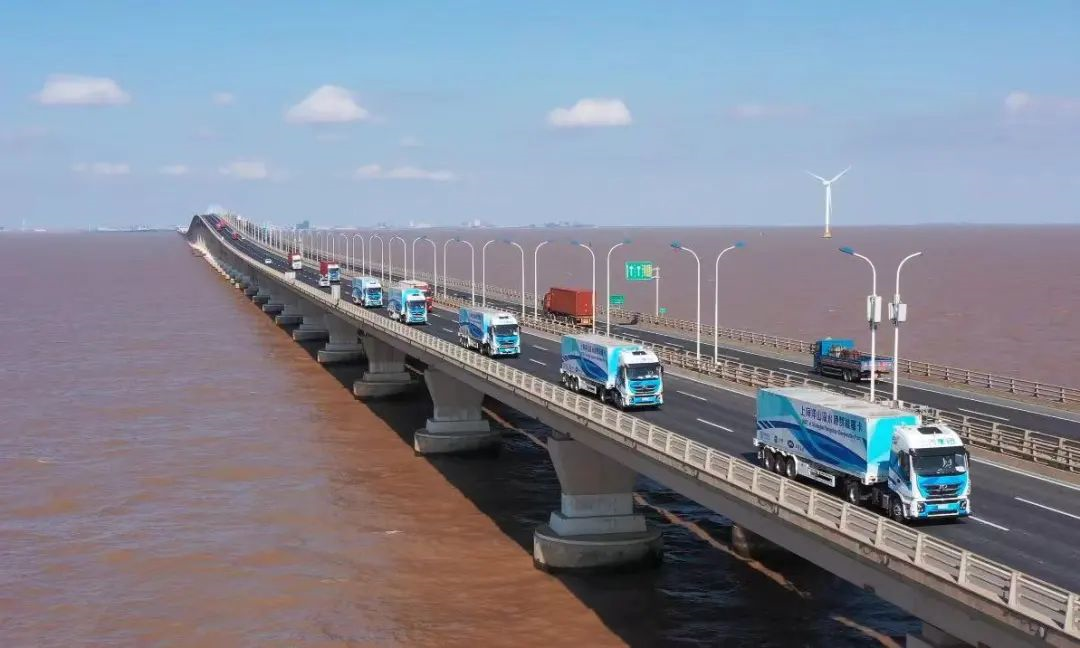
After Robotaxi, capital turns to heavy trucks
According to Wang Rui, long-haul logistics is one of the key areas of application for UD Group’s Zhitu intelligent logistics platform. By the end of this year, UD Group plans to deploy around 100 heavy trucks on ten long-haul logistics routes. Currently, the bottleneck of the long-haul logistics scenario is mainly due to the need for further improvement and breakthroughs in national laws and regulations, and has not yet demonstrated significant commercial value. However, this does not prevent investors from investing ahead of time.
In the transportation industry, due to timeliness and cost advantages, China’s highway transportation business accounts for 72% of total transportation business. When there is a disparity between supply (labor) and demand (freight volume), it is also the best time to accelerate the incubation of new technologies.
As of now, there are dozens of commercial vehicle autonomous driving companies around the world, which can be mainly divided into three categories: start-ups, new businesses of traditional OEMs and business expansion of Internet giants. Autonomous driving R&D requires a lot of investment, for OEMs and Internet giants, they have cash cows and sufficient cash reserves, but for start-ups, they must continuously present new stories to investors, make them see the business prospects and obtain money to maintain normal operation.
One of the representative start-ups in the industry is Momenta, which completed four rounds of financing after 2020, and each round of financing was over $100 million. Tusimple also went public on the US stock market in 2019.
Earlier this year, Pony.ai, a leading robotaxi company, announced its focus on commercial autonomous driving scenarios, which also serves as a signal. The competition in passenger car autonomous driving technology is more like a game taking place in an ivory tower. We all know that it will definitely open up a brand-new era of automobiles, and no player is willing to lag behind others in the “investment in the future” matter. However, no one can give a clear commitment, and the market does not have a pressing demand for this technology. These reasons have led to the unclear commercial prospects of passenger car autonomous driving technology, at least there is no reasonable object to buy in outside L2+ technology.
After exchanging ideas with Wang Rui, we concluded four selling points for the autonomous driving heavy truck industry that can attract investors: labor costs, accident rates, equipment costs, and feasibility of implementation.Compared with passenger cars, the prospect of commercial vehicle autonomous driving is more promising, with both supply and demand sides being very urgent. In addition to the increased freight volume, cost savings are also an upgrade point for autonomous driving commercial vehicles. Based on the current salary standards for freight drivers, a monthly salary of 15,000 RMB is the basic level, and it is also possible for drivers who adopt the model of subcontracting from large companies to earn 20-30,000 RMB per month, as long as they are willing to work hard. According to data from 2018, labor costs account for 40% of the single freight cost, and have also been continuously increasing in recent years.
For example, the unmanned AIV intelligent transfer vehicle developed by Youdao Zhitu has very clear application and commercial values in ports. The AIV mainly solves the container transfer needs of some semi-enclosed and enclosed areas within the port area, which is referred to as the inner container truck, and can realize 24-hour unmanned operation. It can replace the on-site work of three shift workers, helping companies save about 600-700,000 RMB per year in labor costs.
Another benefit of unmanned transport is the reduction of accident rates. Long-haul transportation is a boring and tiring job, and fatigue driving is a common occurrence in order to make a living. In high-speed scenarios, large freight vehicles will cause tragic consequences once they lose control, while AI is often more appropriate than humans in handling many emergency situations.
Technically, hardware support is necessary to achieve autonomous driving. Currently, besides Tesla’s insistence on using visual algorithms, most autonomous driving technologies use fusion perception algorithms. This technology route inevitably requires high-precision perception units and high-performance computing platforms as auxiliary devices in the process of advancing towards higher levels of autonomous driving. Since L2-level assisted driving has already become a mainstream configuration in the passenger car industry, with low production costs and high shipment volumes, users do not need to bear too much additional cost for this function. However, as functions continue to iterate and lidar is added to the car, the cost problem brought by solving higher-level assisted driving functions will be transferred to users.
For example, on the XPeng P5, users can choose to install lidar at an additional cost of 8,000 RMB, which is a relatively reasonable approach. Other automakers choose to sell lidar as standard equipment to users. The question remains whether these complex hardware devices can provide users with quality improvements, and this is currently an unknown.
At least, we can see that the hardware costs of the L4-level autonomous driving Robotaxi that has begun operating are very high, often exceeding hundreds of thousands of RMB, and this is also a necessary condition for achieving true “unmanned”. If we put aside legal and regulatory issues for the time being and only consider whether users can pay the price for L2 or higher advanced autonomous driving, this is a core issue that manufacturers need to consider for a long time, and is also one of the key factors that restricts them from transitioning from commercial to civilian use.
Regarding hardware costs, Wang Rui reviewed the development process of Youdao Zhitu’s autonomous driving technology.
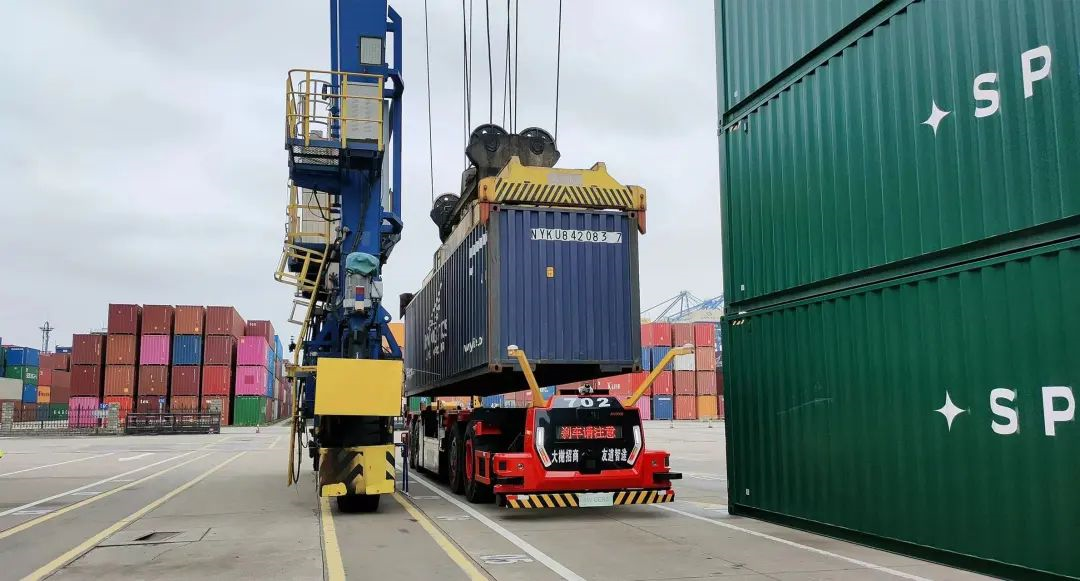 > “Two years ago, the intelligent heavy trucks on the East Sea Bridge L4 cost hundreds of thousands or even millions of dollars for the intelligent driving devices, due to the high cost of domain controllers and LiDAR. As technology upgrades and mass production accelerates, the overall cost of intelligent driving has also dropped significantly. With the commercial application of autonomous driving, the mass production of autonomous driving products, as well as national policies, capital favoritism, and other factors, the hardware and software costs for future autonomous driving applications will continue to decrease in the next three years.”
> “Two years ago, the intelligent heavy trucks on the East Sea Bridge L4 cost hundreds of thousands or even millions of dollars for the intelligent driving devices, due to the high cost of domain controllers and LiDAR. As technology upgrades and mass production accelerates, the overall cost of intelligent driving has also dropped significantly. With the commercial application of autonomous driving, the mass production of autonomous driving products, as well as national policies, capital favoritism, and other factors, the hardware and software costs for future autonomous driving applications will continue to decrease in the next three years.”
On the other hand, the cost issue is not significant in heavy-duty trucks, because their selling prices are already high, generally ranging from several hundred thousand to several million dollars, so they are not sensitive to the cost increase of sensors and software. In addition, China has 8 million heavy-duty trucks in operation, and with the strict elimination system for freight vehicles, there is an annual demand for millions of truck sales in the heavy-duty truck market. “Outputting products in a relatively stable market is more conducive to achieving scale and further reducing costs.”
The last advantage for commercialization is a relatively single operating scenario. As there are already many autonomous driving shuttle buses in operation in port areas due to their single scenario, the highway logistics scene also has less corner cases for high-level autonomous driving systems, making it easier for them to land.
Strategic goal: Transferring freight to places where they are most needed
If autonomous driving heavy trucks can achieve a breakthrough from ports to highways, then in the future, the freight population will undergo a transfer and go to places where they are most needed.
After clarifying the entire freight chain, it can be seen that the first two stages, from the port to the highways, can be conquered by autonomous driving technology. However, upon entering the urban areas, commercial vehicle autonomous driving technology will face difficulties similar to those of Robotaxi, making it difficult to achieve a breakthrough on social roads.
“This is not a phase problem, but rather the other side of the entire autonomous driving industry dream. Combining the gap and negative growth trend of the freight population and distributing resources reasonably, the shift from the highways to the cities will be the general direction for transfer.”
At the same time, there will also be a role shift for freight drivers, and Wang Rui also has his own understanding on this matter.> “Reducing headcount is on one hand the absolute decrease in numbers, but on the other hand it can be understood as minimizing work intensity to the greatest extent possible, and therefore, job roles may change. Now it’s the ‘safety officer’, but in the future this role may have new attributes. The car is just a carrier. For example, in a scenario, a person only needs to spend 10% to 20% of their time managing and intervening, and the rest of the time can utilize the carrier to provide more working methods or job modes. After achieving unmanned and intelligent operation, many of people’s energies can be released, and more can be done through the carrier, which is also a way of upgrading work, and we believe it will attract more young people to participate.”
Stuck in the Demo: Autonomous Driving Heavy Trucks
In the commercial vehicle autonomous driving industry, we have big names from the Robotaxi industry, dozens of start-ups working hard, and heavyweight players like JD and Alibaba, who themselves have distribution and logistics businesses, all seemingly coming together to push the development of the industry, but is the future really so bright?
In fact, there is still a big obstacle on the way to the development of autonomous driving heavy trucks: whether they have real scenario resources.
After a closer look at the architecture of Youdao Zhitu Technology Co.,Ltd., it can be seen that what sets it apart from many other autonomous driving start-ups is that its investors not only invest money but also provide scene resources. For example, Shanghai International Port (Group) Co., Ltd., has provided Youdao Zhitu with a lot of port scene resources. In this regard, Wang Rui explained that continuous operation of real scene resources is very helpful for the continuous optimization of autonomous driving systems.
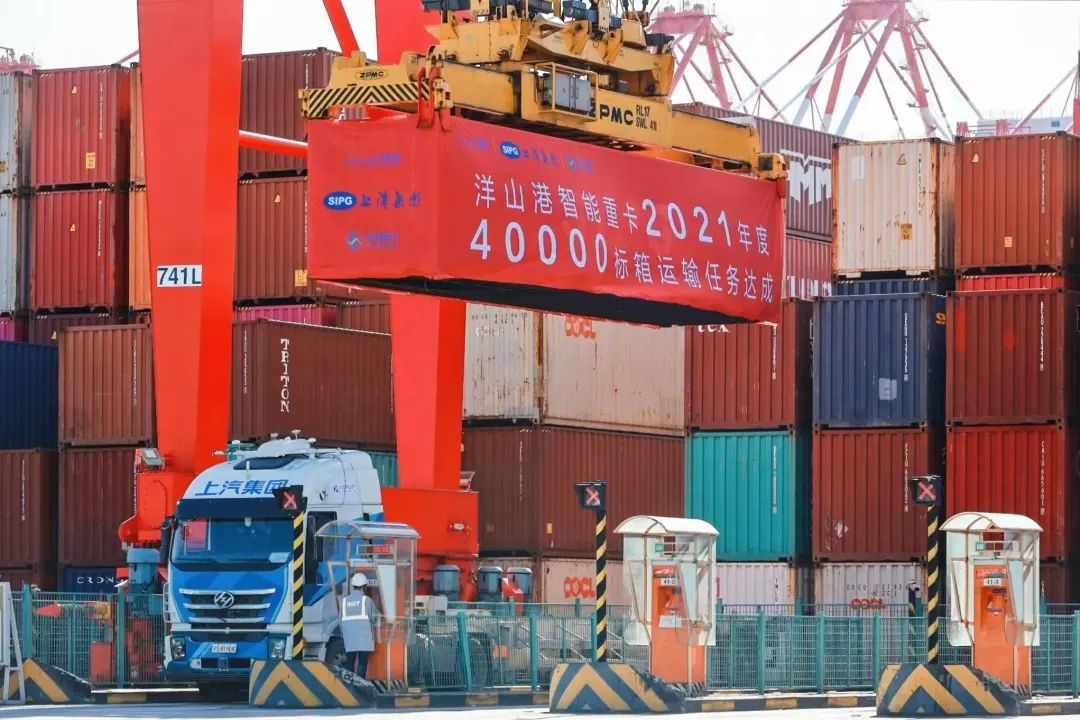
We all know that data is the lifeblood of autonomous driving technology. When many commercial vehicle autonomous driving companies in China are raising funds for social outreach, they will also disclose their testing history as core information. But doing demos, simulations, and actual operations are completely different things.
According to Wang Rui, at this point, there is still room for breakthroughs and improvements in national policies and regulations. Therefore, in China, there are very few scenes that are completely open for autonomous driving operation testing. The scenario of the L4 intelligent heavy truck for real container closed-loop transportation on the 72-kilometer logistics loop of the Donghai Bridge should be the only one in China.
The safety officer takeover rate is a critical indicator in the testing process for whether a system has the ability to land. In the development and construction stage of technology, collecting corner cases is also a necessary process to improve an autonomous driving product. Without real scenarios to test technologies, it is like running blindly with your eyes closed, and there will always be a gap between product development and landing.In the Shanghai epidemic, 10 L4 intelligent heavy trucks from Youdao Zhitu drove the logistics loop from Shenshui Port Logistic Park, across the East China Sea Bridge, to Yangshan Port, covering a round trip distance of 72 kilometers. In addition, 10 AIV unmanned transfer vehicles were deployed in the Waigaoqiao Fourth Port Area to ensure the daily container transfer operations. After the outbreak, Wang Rui has given deeper thoughts on commercial vehicle autonomous driving business.
Currently, autonomous driving is mostly being tested and operated within the demonstration zones designated by various provinces and cities, which are relatively closed environments with limited personnel. During the epidemic prevention and control period, the demand for autonomous driving technologies is more concentrated in city centers or large warehousing centers with busier logistics workflows, to ensure smooth logistics transportation. Therefore, in the post-epidemic era, it is critical to make strategic reserves in some large control centers, strategically plan autonomous driving routes in advance, carry out high-precision map collection, and optimize function adaptations, while reserving appropriate autonomous driving vehicles or other products. When encountering similar “black swan events,” all autonomous driving products can truly “run” smoothly.
When talking about the autonomous driving capabilities of commercial vehicles, Wang Rui also mentioned a concept called “autonomous driving generality.” Due to the high intensity of work for trucks, many components in the intelligent driving system are more fragile. It might seem fine to run a few times, but after running 10 hours a day for more than 365 days, many problems will be exposed after a few years. When the vehicle is new, the operation and control are precise. However, after running 100,000 kilometers under load, many parts of the vehicle will wear out, and the response to control will become slower, and the control accuracy will also be poor. Therefore, it’s essential to optimize the generality of the autonomous driving system to continuously adapt to the product. No truck owner would replace new parts every few days, and this approach does not reveal the commercial value of autonomous driving.
With the endorsement of SAIC Motor Group, Youdao Zhitu has a systematic capability. The upstream investment can provide real test scenarios for the technological landing, and the systematic capability is necessary to promote the technology into a broad market.
As we mentioned above, popularizing commercial vehicle autonomous driving technologies requires mass production to reduce hardware costs, and ultimately achieve the lowest cost industry ecological environment. The question now is who will consume these autonomous driving heavy trucks in the downstream freight industry?
According to rough estimates, 90% of heavy trucks in China belong to individual households, while 10% of medium and large freight companies tend to adopt outsourcing. We often see on the internet the question, “Why are imported heavy truck products more powerful, yet domestically produced heavy trucks have the best sales?” This question reflects the penny-pinching attitude of individual households towards costs.
“Father-son” and “wife-husband” shops are a miniature of the freight industry. Perhaps heavy trucks equipped with L2-level advanced driver assistance systems with lower costs can change their minds, but cost is always the bottleneck issue. After all, heavy trucks are productive tools and not like private cars that improve quality of life. In the future, the upgrading of the freight industry needs to standardize and scale downstream industries in order to unleash the core value of autonomous driving heavy trucks.
In this regard, Wang Rui pointed out that trunk logistics is also gathering towards some large-scale companies, which will combine autonomous driving technology to form a large-scale fleet, also giving more market opportunities to UDI. For example, some large express delivery companies need large-scale transportation, and the “employee reduction” operation mode is applicable. UDI can achieve “one plus four” convoy driving at the end of the year, which can effectively improve operational efficiency. Especially after realizing “employee reduction” operation, it can greatly reduce the labor cost of logistics companies and specifically solve the pain points of the logistics industry.
Finally
From the fact that more and more players are entering the commercial vehicle autonomous driving field, we can see that the autonomous driving industry is trending towards calm, especially for those start-up companies. At least for now, the leading autonomous driving companies have almost monopolized the majority of the business of passenger car manufacturers, while investment in higher-level autonomous driving businesses is silent.
Therefore, the heat in the field of self-driving commercial vehicles in recent years continues to rise. Before officially opening the second half competition of advanced autonomous driving, commercial autonomous driving businesses are a good transitional midfield.
This article is a translation by ChatGPT of a Chinese report from 42HOW. If you have any questions about it, please email bd@42how.com.
